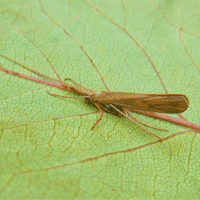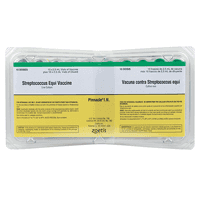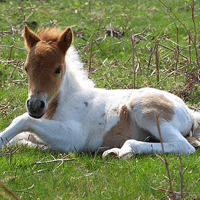You can get in touch with me by telephone or text during normal business hours, through the email form below, or by postal mail at the address listed below.
For emergencies, please call, do not use the contact form.
Contact
Contact Information
484-447-6945
P.O. Box 5011
Limerick, PA 19464
drjessvet.com
Vaccinations and Your Horse: II
Now onto more risk-based vaccines.
Posted on: June 22, 2015

How to Choose
Your horse may need Potomac Horse Fever, Strangles, Pneumabort or Prodigy, and Rotavirus. Your veterinarian is the best resource to help you decide if your horse is at risk for contracting the diseases covered by these vaccines, whether based on their environment, geographical location, exposure to other horses, or due to pregnancy.
Potomac Horse Fever

Caddisfly
Potomac Horse Fever is caused by a bacteria called Neorickettsia risticii.
The disease is more prevalent in areas bordering the Potomac River, although
it is often diagnosed in other states. Horses that live near water, especially
ponds and streams, are at more risk of contracting it, since it is spread by
ingestion of aquatic insects, such as caddis flies, or snails, which have acquired
the bacteria. It is most commonly seen in horses in the summertime. Signs of PHF
include fever and diarrhea, although not all cases will show both. There is a blood
test for PHF, although many veterinarians will begin treatment while waiting for
test results as tests may take several days to be completed. Treatment includes
intravenous doses of the antibiotic oxytetracycline, along with supportive care
such as IV fluids and anti-inflammatory medications like Banamine for reducing fever.
Those cases with severe diarrhea may benefit from probiotics and anti-diarrhea
medications such as Biosponge. One major complication possible with PHF, as with all
fever and diarrhea-causing diseases, is laminitis, so supportive care also involves
taking care of the feet. The vaccine is usually given once a year after two initial
doses given one month apart.
Strangles (Strep. equi)

Strangles Vaccine
Strangles is a mainly respiratory disease caused by exposure to nasal secretions or
infective pus containing the bacterium Streptococcus equi. The disease commonly leads
to fever and nasal discharge, as well as abscessation of lymph nodes. More rarely it
can spread internally, causing what is known as bastard strangles. Samples of nasal
secretions and pus can show evidence of the disease via a few different tests, although
treatment with antibiotics is usually started prior to a definitive diagnosis.
Horses that reside on a farm that has had the disease in its herd, as well as horses
frequently travelling or coming in contact with new horses should be vaccinated.
The most commonly used vaccine is a modified-live intranasal one, although a less
effective killed intramuscular vaccine does exist. After the initial course of two
doses approximately three weeks apart, most horses are dosed once a year.
Pneumbort/Prodigy

Paint Pony Foal
(abortive form of rhinopneumonitis) Pregnant mares are at risk of abortion due to a particular form of rhinopneumonitis, and should be vaccinated against it at five, seven and nine months of gestation, in addition to their regular rhino/flu vaccination, which should be given prefoaling, at 10 months of gestation.
Rotavirus
Rotavirus is most commonly seen in very young foals, and most prominently causes diarrhea that can be fatal if left untreated. Farms may have "storms" of several foals in a foaling season that are affected, so this vaccination is used often in large foaling operations. Annual vaccination of pregnant mares at 8, 9, and 10 months of pregnancy will help to protect the foal once it is born.